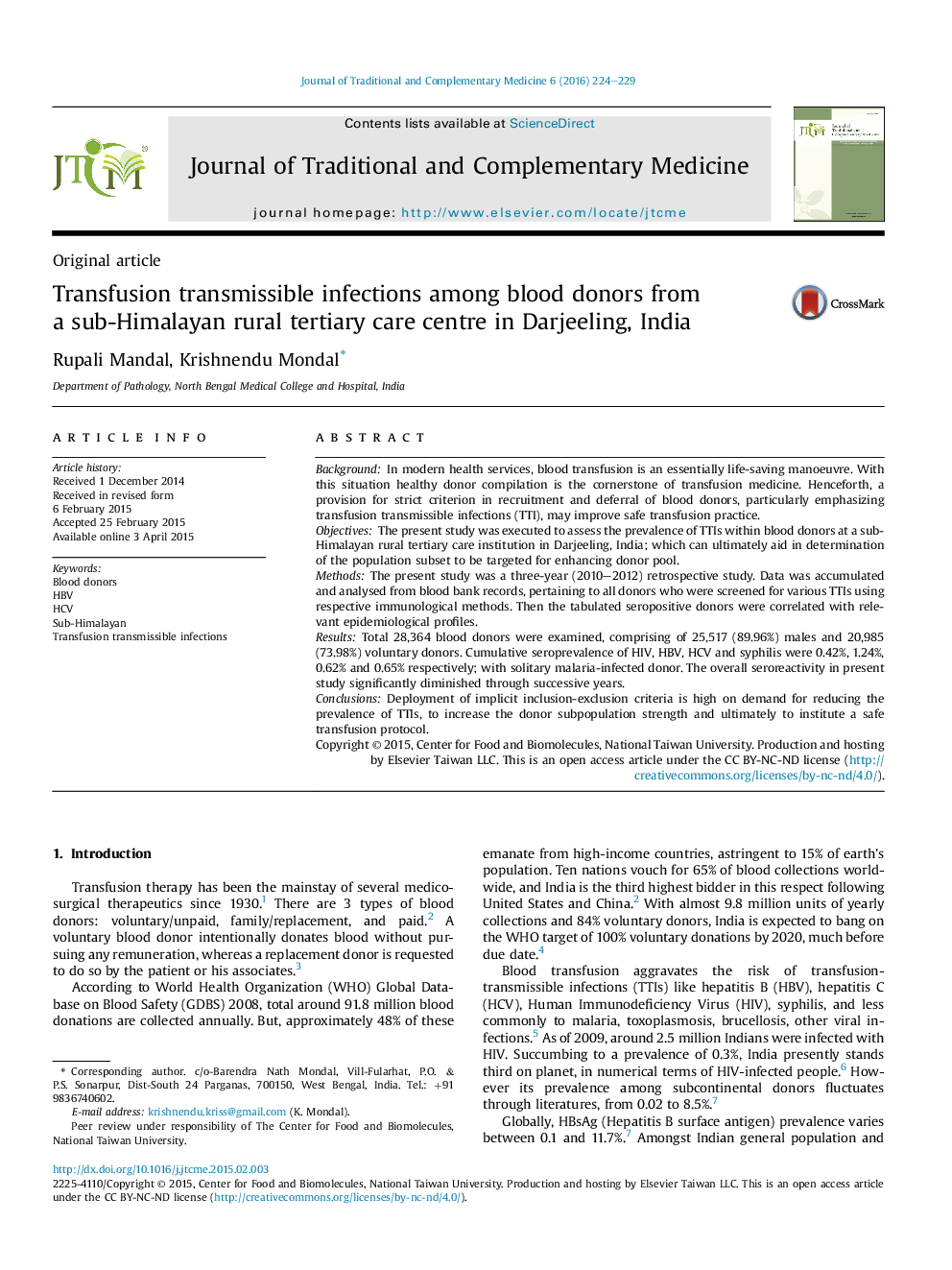| Article ID | Journal | Published Year | Pages | File Type |
|---|---|---|---|---|
| 3099671 | Journal of Traditional and Complementary Medicine | 2016 | 6 Pages |
BackgroundIn modern health services, blood transfusion is an essentially life-saving manoeuvre. With this situation healthy donor compilation is the cornerstone of transfusion medicine. Henceforth, a provision for strict criterion in recruitment and deferral of blood donors, particularly emphasizing transfusion transmissible infections (TTI), may improve safe transfusion practice.ObjectivesThe present study was executed to assess the prevalence of TTIs within blood donors at a sub-Himalayan rural tertiary care institution in Darjeeling, India; which can ultimately aid in determination of the population subset to be targeted for enhancing donor pool.MethodsThe present study was a three-year (2010–2012) retrospective study. Data was accumulated and analysed from blood bank records, pertaining to all donors who were screened for various TTIs using respective immunological methods. Then the tabulated seropositive donors were correlated with relevant epidemiological profiles.ResultsTotal 28,364 blood donors were examined, comprising of 25,517 (89.96%) males and 20,985 (73.98%) voluntary donors. Cumulative seroprevalence of HIV, HBV, HCV and syphilis were 0.42%, 1.24%, 0.62% and 0.65% respectively; with solitary malaria-infected donor. The overall seroreactivity in present study significantly diminished through successive years.ConclusionsDeployment of implicit inclusion-exclusion criteria is high on demand for reducing the prevalence of TTIs, to increase the donor subpopulation strength and ultimately to institute a safe transfusion protocol.
Graphical abstractFigure optionsDownload full-size imageDownload as PowerPoint slide
